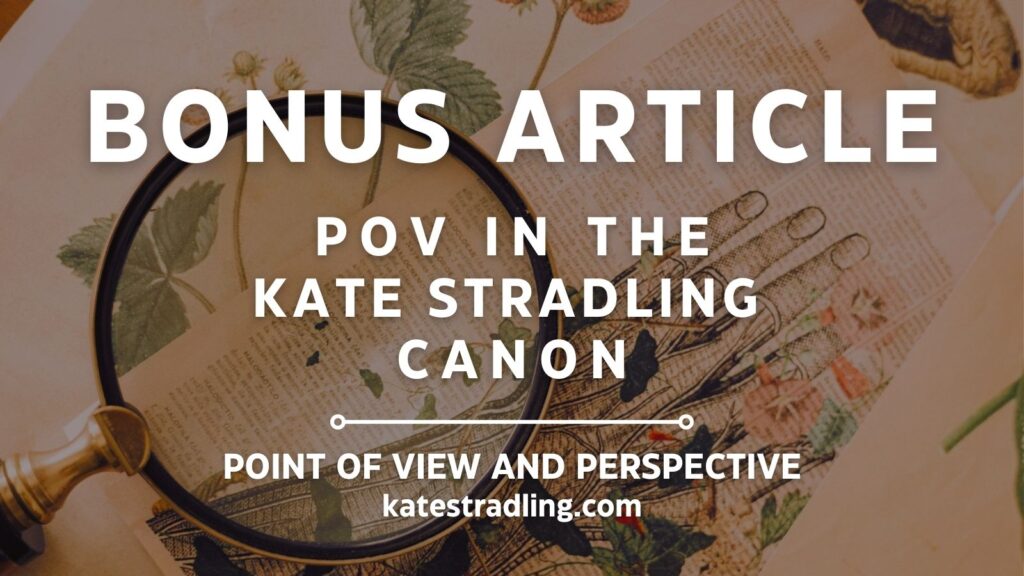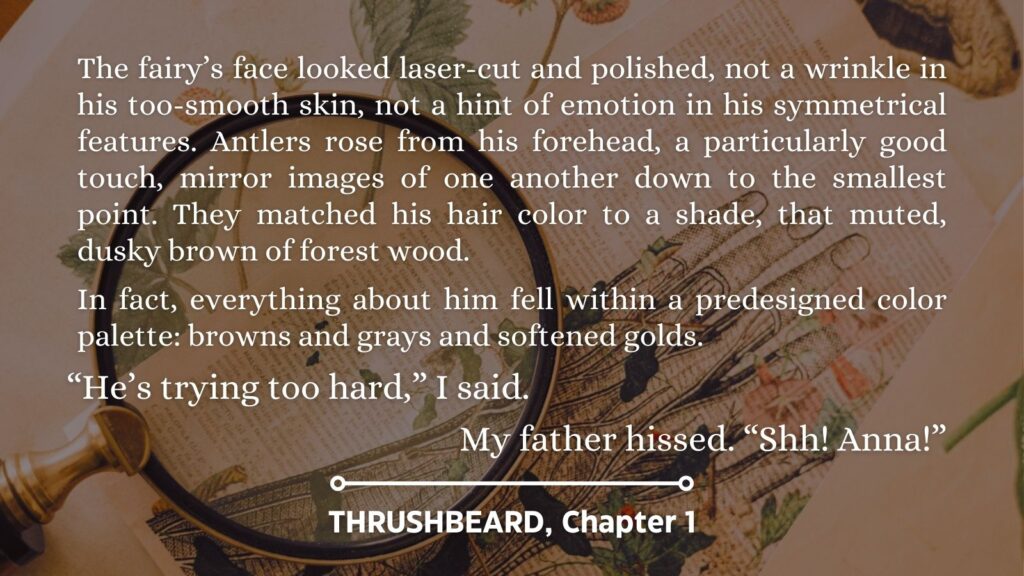Welcome to a self-indulgent bonus POV article!
When I’m creating a blog series, I don’t cite my own books for examples. In general, creators lack the necessary critical objectivity when it comes to their personal work. More specifically, I get squeamish putting myself on a pedestal I don’t merit.
But, since I do love playing with Point of View—and now that the blog series is officially over—here’s a rundown for how I’ve applied it.

My default setting is Third Person Limited Omniscient, so expect a lot of that. I’ve honed that style from loose Limited in my earlier years to a tighter Limited now.
However, I don’t claim perfection on this or any other technique. In fact, my imperfections have led to many of the caveats I included in the main blog series.
(I make mistakes so you don’t have to, haha.)
Annals of Altair (series)
POV: Third Omniscient/Limited Omniscient, with a sprinkle of Epistolary in the first book.
This dystopia-lite series taught me that antiheroes can have a more interesting journey than righteous protagonists.
Hence why my snot-nosed Oliver got his own book in the end.
The original releases of Books 1 and 2 had a wordier style that is classic of amateur writers. When I wrote Book 3 several years later, I edited the first two to match the more efficient narrative tone I’d developed over time. The story itself didn’t change.
Ruses of Lenore (series)
POV: Epistolary + Third Limited Omniscient, focused around the main character of each book.
My initial draft for KINGDOM OF RUSES was supposed to be in First Person. Roughly three pages in, however, I remembered that I loathed First Person Point of View. This was my first Nanowrimo novel, which meant that time was of the essence and a switch from First to Third would cause delays. I’d already mentally pictured certain events from Viola’s perspective, too, and I didn’t want to give up her personal commentary.
Thus, the diary entries manifested.
The KOR Chapter 1 intro breaks my most important of epistolary caveats: it’s totally an info dump. It was the second book I ever wrote, though, so I didn’t know any better. The entries aren’t chronological with the events, either, which makes Viola a bit of an Unreliable Narrator. Her introduction of Victor could only happen after she’s met Will, which means she was waxing disinterested about the former while trying to pretend that nothing in particular had happened with the latter, only to later confess.
I’ve prevaricated likewise in my own journals, so it felt plausible enough.
The epistolary chapter intros carried over into TOURNAMENT and GUARDIAN. This was troublesome in ways, but also fun. I think my favorite entry is Flora’s simple intro to Chapter 24:

I can picture her sitting in front of her journal, debating what to write—or whether to write at all—then settling for that on its own.
Probably the most unrealistic part of this series is that I have three different heroines who are dedicated journal-keepers. But, it’s a fantasy world, so I reasoned that trait was more common than it might be in real life.
Goldmayne: A Fairy Tale
POV: Loose Third Person Limited Omniscient, focused on my hero, Duncan.
The narrative style is supposed to evoke old-school fairy tales, so it’s a bit more flowery and “Tell, don’t show” than some of my other work. It’s also one of my longest published novels, though, so it merited a bit more telling. If I showed everything, it would have ballooned into a series instead of a single book, and who wants that?
(No you don’t. Stand-alones for the win.)
I played with perceptions and ambiguity, particularly when it comes to Alberta’s character. If I were to rewrite it today, I’d include a whole lot more Free Indirect Speech. The lack thereof remains a relic of my earlier style.
The Legendary Inge
POV: Multiple Third Limited Omniscient, with Xenofiction in the prologue.
This novel got its inspiration from Beowulf, so I used alliteration as one of my subtle homages to that source. (OE poetry didn’t have rhyme schemes; they used a system of stress + alliteration in their lines.) This is especially prominent in the prologue, which has a man-eating monster as its Viewpoint Character, and which ends in a moment of instant karma that is perhaps my favorite of any I’ve ever written.
In the main body, Inge and Raske are the primary and secondary Viewpoint Characters, with Gunnar featuring as a rare third.
The epilogue, which centers on Halvard and Signe, leans more Omniscient/Objective Narration in its style.
Namesake
POV: First Person Present Tense, with an intentionally unlikeable narrator. Anjeni embodies teenaged angst at the start and grows into herself over the course of the book.
This novel was a huge experiment, narratively. For one thing, I was addressing my deep dislike of First Person. (If I’m going to loathe something, I should at least attempt to understand it, right?) I’d meant to write a there-and-back-again style novella, but my critique group at the time cajoled me to flesh it out. Thus it became more of a literary training ground than I’d intended.
To match my blunt heroine, I cut out a multitude of filter verbs and avoided flowery descriptions. The narration is supposed to be stark, and the choice of Present Tense supports this.
Brine and Bone
POV: Prologue and epilogue in First Person, main body in Third Person Limited Omniscient. The Viewpoint Character for all of these is Magdalena.
This novella represents an epiphany near and dear to my heart. When I realized I could retell “The Little Mermaid” with Anderson’s original ending if I told it from the perspective of the “other woman,” it felt like the sun dawning after a long night.
Because fairy tale readers generally despise that other woman (“She stole the mermaid’s prince and sentenced her to death!”), I used Point of View as a cheat code to lodge sympathy with Magdalena from the start. Hence, the First Person prologue.
Interestingly enough, Anderson’s fairy tale, if told from any perspective other than the mermaid’s, lends sympathy to any character except for her.
Soot and Slipper
POV: Just your standard, fluffy Limited Omniscience with Free Indirect Speech, centered on Eugenie.
I toyed with the Reader’s knowledge vs. the Viewpoint Character’s. This “Cinderella” story, instead of starting with the orphaned heroine’s tragic backstory, begins with preparation for the ball. If everyone knows the tale, why not skip to the good stuff?
My overarching question that sparked this retelling: Why would someone in an abusive situation remain? In Eugenie’s case, it’s because she doesn’t recognize her situation as abusive. The Reader knows, though, and that Dramatic Irony drives her story forward.
The Heir and the Spare
POV: Dual Limited Omniscient, primarily from Iona’s perspective, with Jaoven as a secondary Viewpoint Character.
This use of Dual Point of View was another cheat on my part. Because Jaoven’s past actions were so heinous, switching to his perspective was the best way to show that he’d reformed. This mechanism also allowed me to reveal his private reactions when his plans go awry, which would otherwise have remained hidden.
Cue the catharsis of watching a bully reap his just rewards.
Maid and Minstrel
POV: Third Person Limited Omniscient from Rosalind’s perspective.
I wrote this “King Thrushbeard” retelling to be sympathetic to the haughty princess of the original tale. In her shoes, I’d’ve insulted all my suitors too. (“Go on, sweetie. Pick a husband from this line of dudes who only see you as a trophy.” No, thanks.)
Thrushbeard
POV: First Person Past Tense, from Anna’s perspective.
Fine. I admit it. Over the years, my loathing of First Person has tempered. This “King Thrushbeard” novelette was my answer to the straightforward and sincere retelling of MAID AND MINSTRAL. Namely, what if the princess character was unapologetically fault-finding? And what if the king-in-disguise was unrepentantly scheming? Everything I “corrected” in my first retelling, I leaned into for this one.
And, because Anna’s such a stinker, the First Person narration acts as a counterbalance.

Deathmark
POV: Third Limited Omniscient, centered on protagonist Nell; occasionally, the narrative broadens to Omniscient for a paragraph or two.
Not much interesting stuff here. This book’s first draft predates almost everything else on this list, so I was still writing intuitively instead of with deliberation.
Thankfully, my delays between first and second completed draft took so long that I’d honed my POV techniques. The final draft includes a lot more Free Indirect Style than its earlier version, making for more streamlined prose.
The Beggar Prince
POV: Third Person Limited Omniscient, centered on Thorben.
My final “King Thrushbeard” retelling was part of a multi-author series, with the theme being a fairy tale retold from the prince’s perspective. I took that challenge literally.
I think I’m the only one of 12 authors who didn’t have a secondary Viewpoint Character. Dual Point of View wouldn’t have worked with my story, though. Leonie is playing her cards extremely close to the vest, and anything from her perspective would spoil that effect.
And what POV experiments are yet to come?
Predictably, all my current projects are Third Person Limited Omniscient. One shelved-but-maybe-not-dead project is First Person Present Tense. I think, after a decade of serious writing, I’ve finally slipped into a POV rhythm that I like at a proficiency I approve.
Which means it’s high time to hone a different facet of story-craft. Wish me luck!